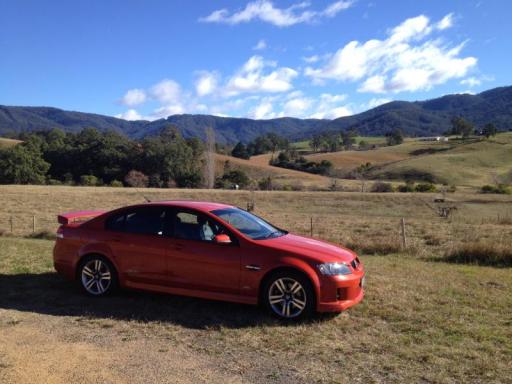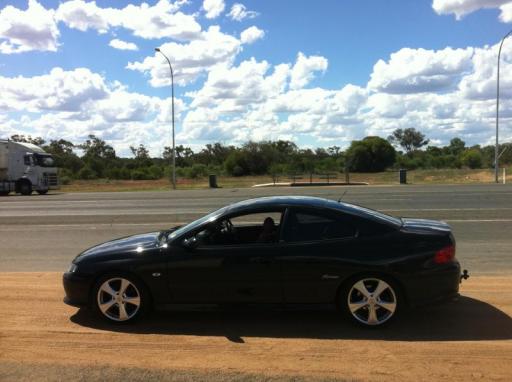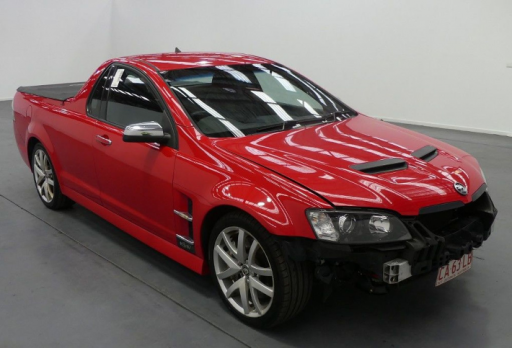GM Holden has locked in plans to produce the second-generation Cruze in Australia from 2016 and is certain to continue with the Commodore nameplate beyond the facelifted 2013 VF model... But exactly what form the 'big' car takes after 2017 is still to be decided.
That's the takeout from discussions with Holden boss, Mike Devereux, at today's media walkaround of the company's refreshed Elizabeth (SA) production facility.
Holden has confirmed it will produce two new Australian-made cars based on two global platform architectures as part of a billion-dollar investment (including $225m from the federal government and $50m from the South Australian state government) that it said would guarantee its Australian manufacturing operations until 2022. And last week its parent company confirmed the GM Delta II small-car platform on which the current Cruze is based and the Theta platform that underpins the existing Captiva will be merged into a single platform codenamed D2XX, which is certain to form the basis of the second-generation Cruze from 2016.
It’s not yet clear, however, what other global platform Holden will manufacture from Elizabeth – or, indeed, if it will provide the basis for an all-new Commodore range around 2017.
During today's plant tour, Mr Devereux indicated the Commodore nameplate was too valuable to discard, but said the exact configuration [in terms of size whether it is front, all or rear-wheel drive] of a VF replacement was yet to be decided – despite the fact Holden’s second platform has been locked in.
“Zeta is not a global platform for GM,” he said.
“The two architectures we put in this plant will be two that we don’t currently use. Delta -- I’ve been candid in saying that given the size and volume of the small car market and its potential for growth we would be kind of dumb not to look at building another small car. The second vehicle [on the small car platform] is yet to be determined.”
“[For the other car] We’re gonna use a global architecture and the Zeta is not a global architecture.”
The Commodore has been a top-seller for Holden since 1978 and was Australia’s most popular model for 15 years running until the Mazda3 gazumped it in 2011.
“I think it (Commodore) is an extremely valuable name,” said Mr Devereux.
“Will Commodore survive beyond 2022? I can’t say... If Australians keep buying them, we’ll keep selling them.
“I’d talk about it in terms of a larger car. Whether it’s a Commodore, if it feels like a Commodore, if it’s called a Commodore... the whole thing is having to predict what to do post-VF commodore in that late 2016, early 2017 time frame and coming up with a winner.”
Asked if a smaller Commodore would have better sales potential, Mr Devereux said: “Anything’s possible. We’re actually still trying to figure out what to build here.
“It could be that we stick with the configuration that we have here, in terms of rear-wheel drive sports sedan. It could be bigger, it could be smaller, it could be that we don’t go with rear-wheel drive and go with front-wheel drive. And the difficulty is that we have to make decisions very quickly here that we have to live with until 2022.”
Mr Devereux confirmed Holden must choose between front/all-wheel drive and rear-wheel drive layouts for its larger vehicle, but could not have both.
“It can be front and all-wheel drive, not front and rear. And AWD cars are pretty good to drive.
“I wouldn’t rule it out [AWD]. [But] It makes more sense in places with inclement weather.”
However, the Holden chief indicated that driven wheels could become the main differentiator between the midsize front-drive Malibu and the larger model Holden builds in Adelaide.
“Looking out in 2016 or 2017, the configuration of the sedan -- which Commodore and Malibu are -- you’d need to figure out what sort of engines... What’s the configuration of the vehicle if you were going do it here that would generate enough volume every single month.
“D [medium] or E [large] segment car, those things are blurring today. The drive configuration -- rear versus front -- is the biggest trigger point for decision making in those two segments right now.”
Either way, Mr Devereux said the next Cruze would be locked in sooner than the VF Commodore’s replacement.
“Our timing for our next-generation [smaller] products is a little earlier because of the lifecycle of our Cruze,” he said.
“So our Cruze has a lifecycle that will end before VF commodore does, which is around the same time as Falcon -- late 2016, early 2017. So we have another decision point quite a bit in front of that on the Cruze... So that's why we have to do that now.”
Mr Devereux said preparations for the production both new platforms at Elizabeth would begin in about six months – around the same time Holden releases the VF Commodore.
“We’re doing that on a constant basis -- there’s things happening already on VF [at the plant],” he said.
“We have dies already changed over. There are VFs out there. We have works that have to be done to prepare the plant for that.
“And then in the very short term we have works that need to be done for the next-gen products, so in the not-too-distant future it won’t be VF we’re prepping for... We’ll have to be doing work for the next two architectures in the middle of the decade,” Mr Devereux stated.





 2007 HOLDEN COMMODORE SS
2007 HOLDEN COMMODORE SS

 Reply With Quote
Reply With Quote



 2002 HOLDEN MONARO CV8
2002 HOLDEN MONARO CV8 2002 HOLDEN MONARO CV8
2002 HOLDEN MONARO CV8 2010 HSV Maloo
2010 HSV Maloo


